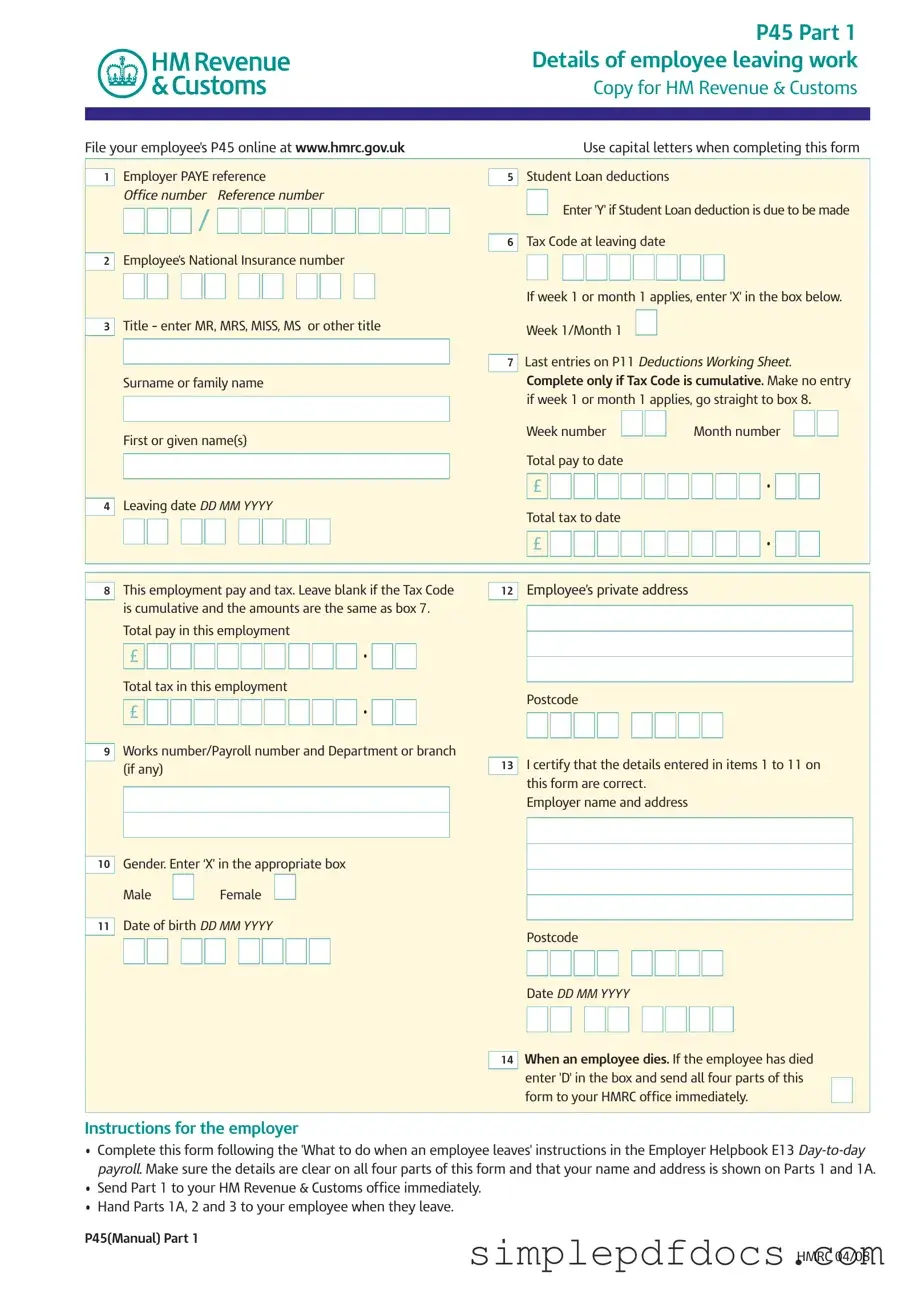Fill Your P 45 It Form
The P45 form is a document issued by employers when an employee leaves their job. It provides essential information about the employee's tax and pay details, which is crucial for both the employee and the new employer. Understanding the P45 is vital for ensuring accurate tax calculations and smooth transitions between jobs.
Get Document Here
